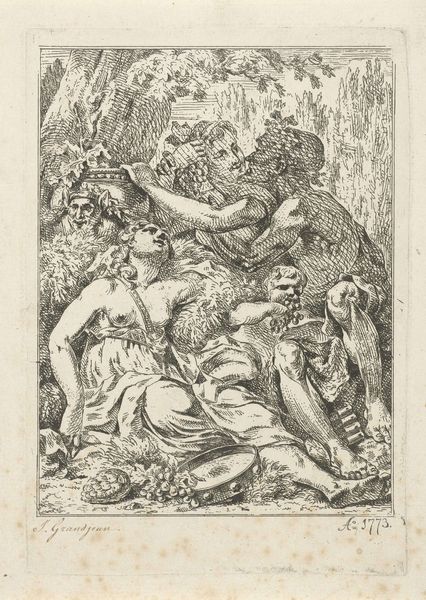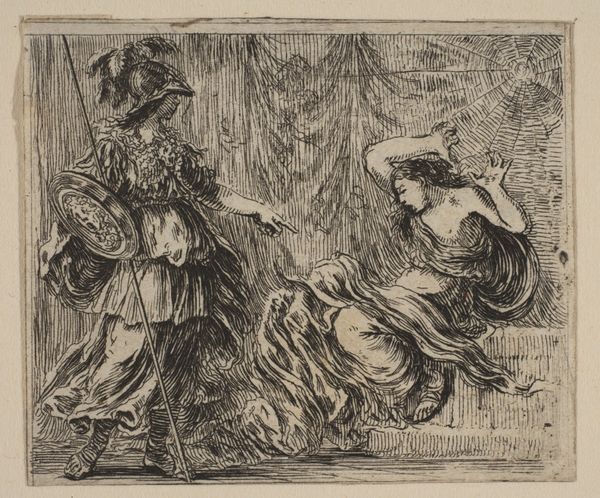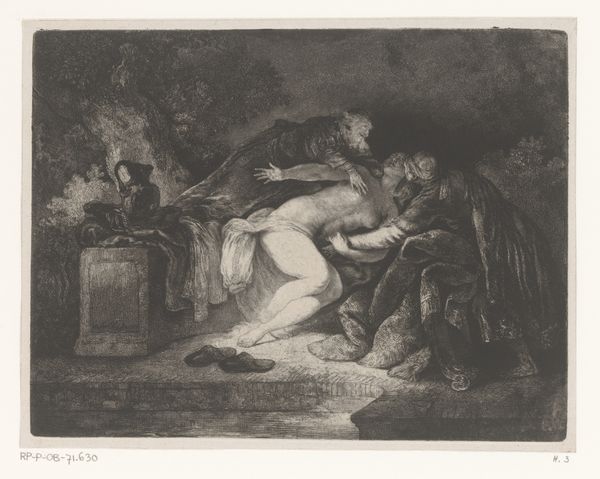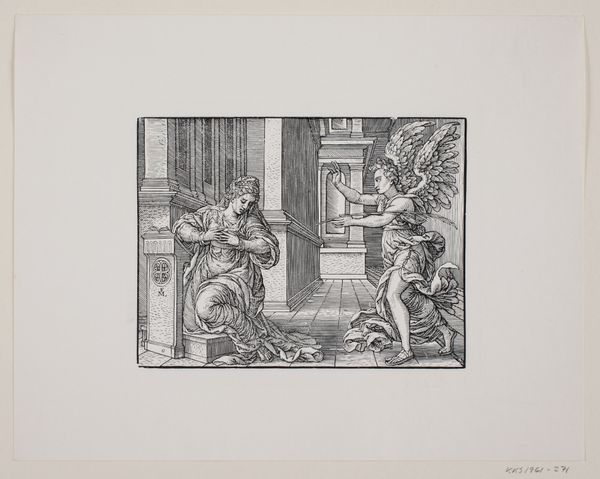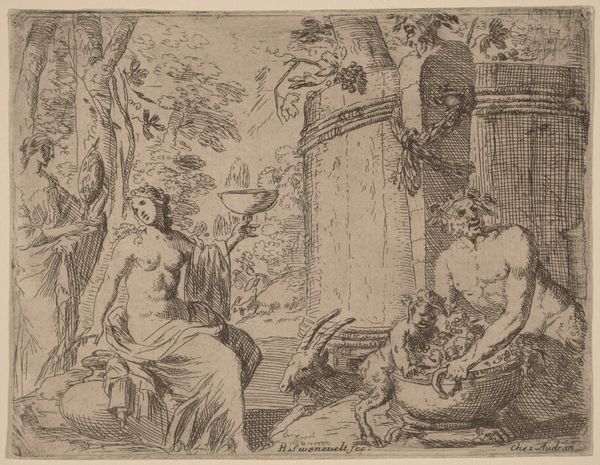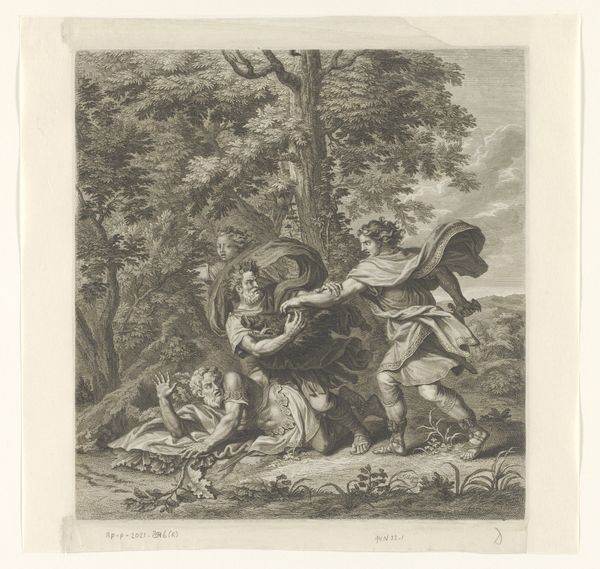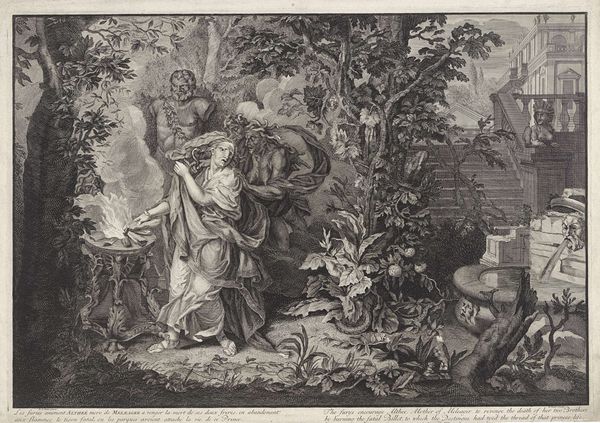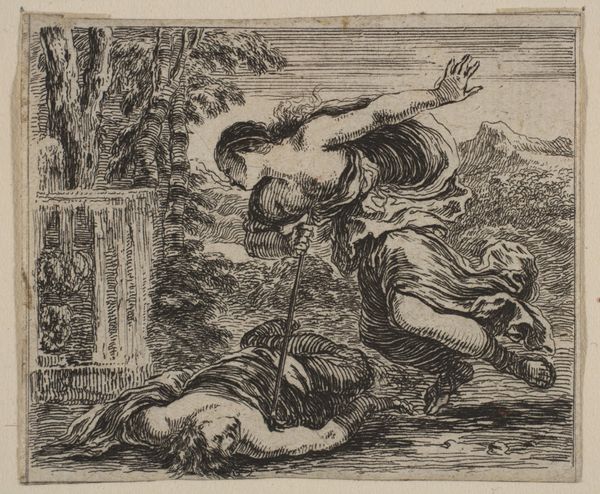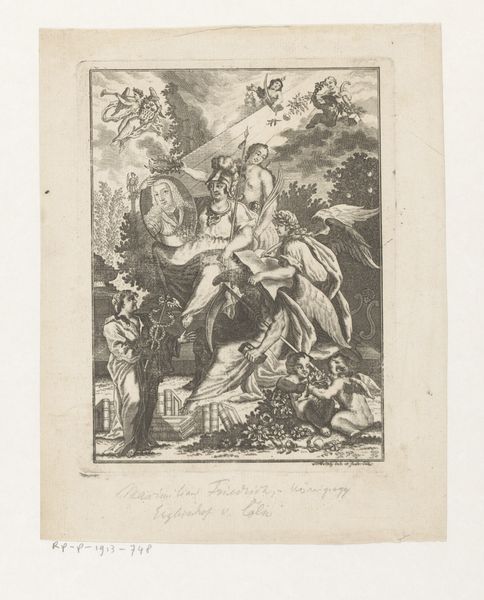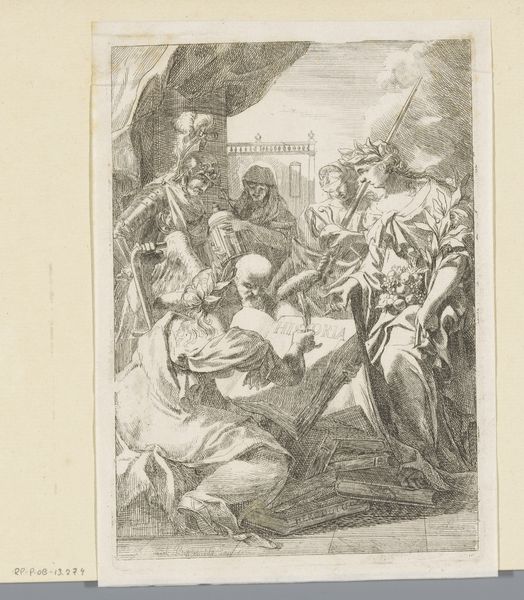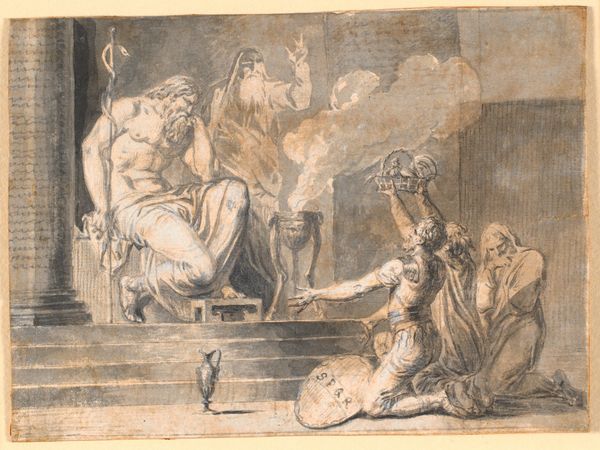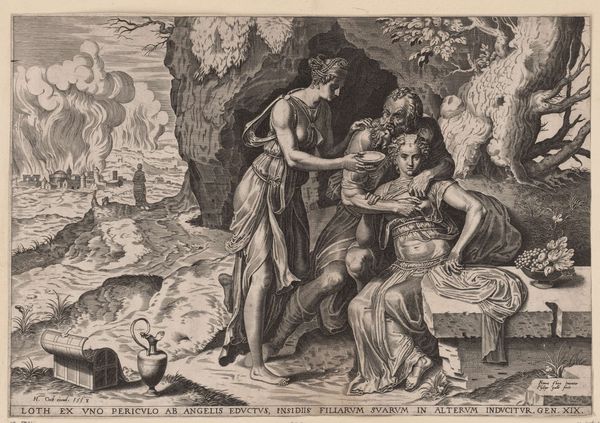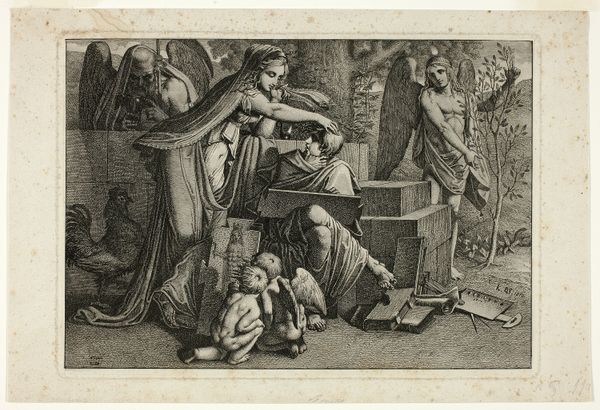
etching
#
allegory
#
baroque
#
etching
#
landscape
#
figuration
#
history-painting
Dimensions: height 200 mm, width 263 mm
Copyright: Rijks Museum: Open Domain
Johann Spillenberger created this etching titled "Vertumnus and Pomona" in the 17th century. Spillenberger’s image invites us to consider the social and cultural role of classical mythology in his time. In the story, Vertumnus, the god of seasons and gardens, woos Pomona, a wood nymph devoted to her orchard. Spillenberger pictures the moment Vertumnus, disguised as an old woman, finally wins her over. Cupid hovers above, bow drawn, ready to strike. Classical subjects like this were extremely popular in 17th-century European art. The story of Vertumnus and Pomona, derived from Ovid’s “Metamorphoses,” speaks to themes of love, transformation, and the bountifulness of nature. This print would likely have been made for a well-educated audience familiar with such tales. Art historians explore how the revival of classical themes intersected with the social and political concerns of the time. Examining period literature, theater, and political writings helps us better understand this artwork’s place in its original context.
Comments
No comments
Be the first to comment and join the conversation on the ultimate creative platform.
